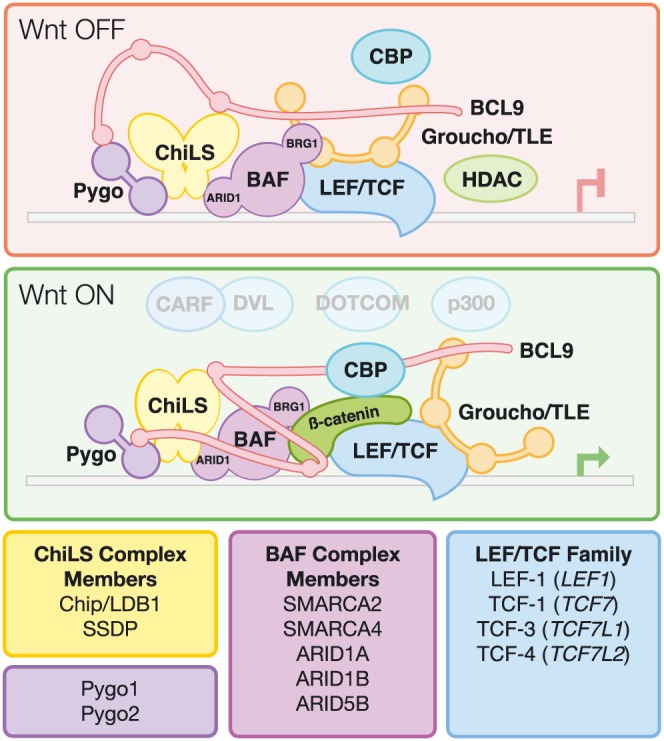Figure 1.

Model of the Wnt enhancesosome. In the absence of nuclear β‐catenin, the Wnt enhancesosome complex (Fiedler et al., 2015) is directly associated with TCF/LEF transcription factors binding to WREs in promoters and enhancers. This complex forms through interactions of BCL9 with Pygopus (PYGO1/PYGO2), the ChiLS complex [Chip/LDB1, SSDP: composed of a dimer of Chip, LDB (an LIM domain‐binding protein) and a tetramer of single‐stranded DNA‐binding protein(SSDP)] and Groucho/TLE [either as a dimer or possible tetramer (Chodaparambil et al., 2014)]. CBP/p300 is also present in the OFF state, although the nature of its binding interaction in this state is less certain. CARF, a newly identified binding partner of DVL2, has been shown to be a positive regulator of Wnt signalling, although its precise binding to β‐catenin remains unknown (He et al., 2017). The chromatin remodelling complex BAF interacts through the ARID1 subunit via directly interacting with ChiLS. The presence of nuclear β‐catenin induces a conformational change in BCL9, allowing CBP/p300/DOTCOM to bind to the c‐terminal end of β‐catenin, and BCL9 binding to the N‐terminal end. Groucho/TLE is inactivated, allowing for transcription of associated Wnt target genes. Figure adapted from van Tienen et al. (2017).
